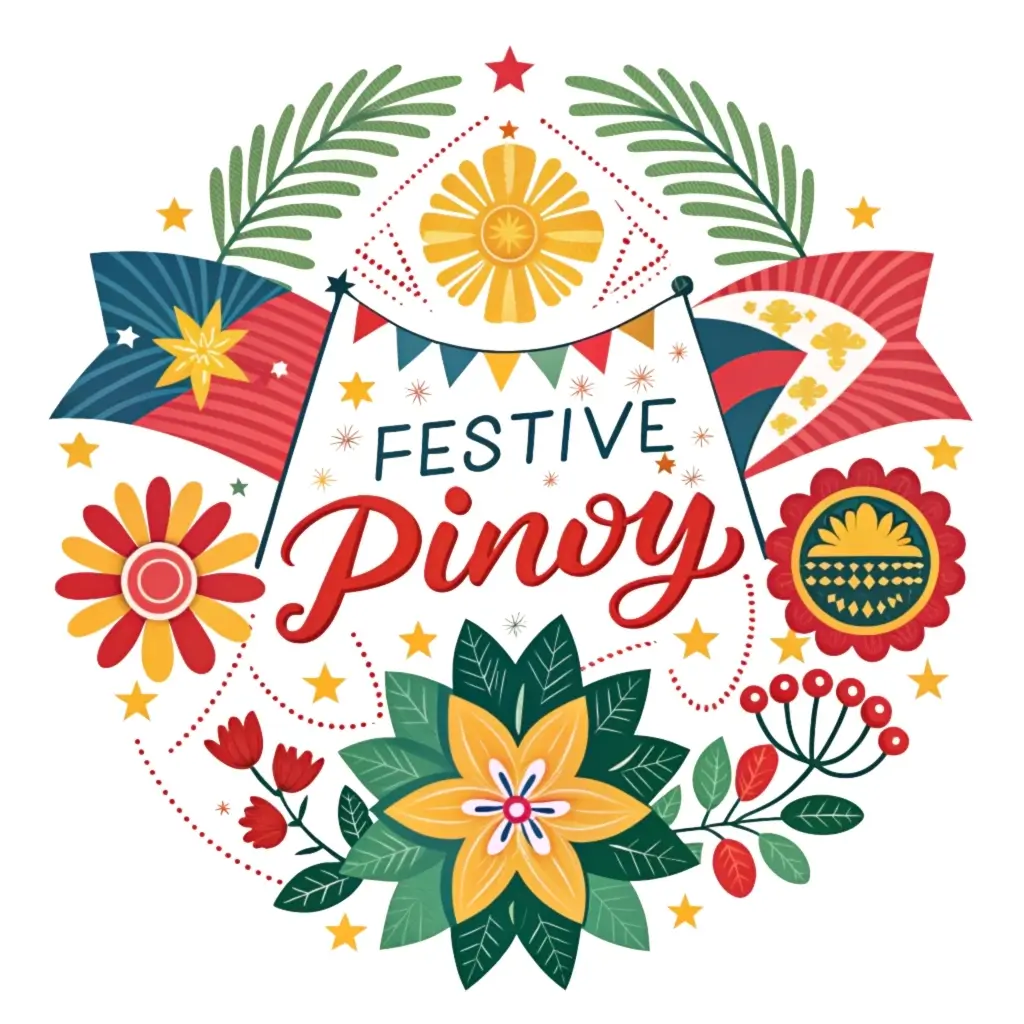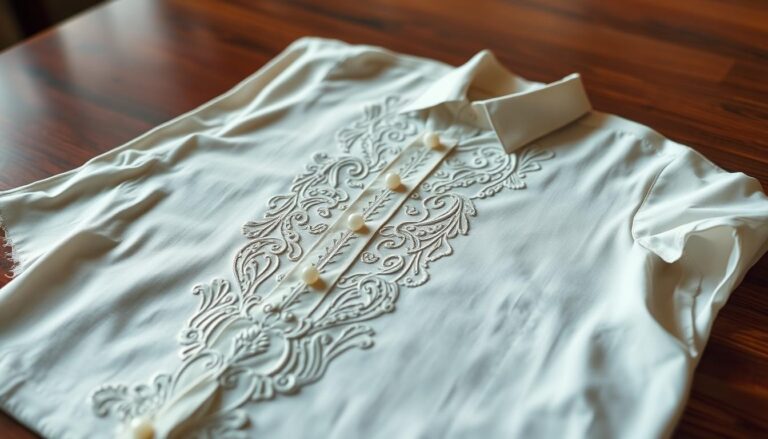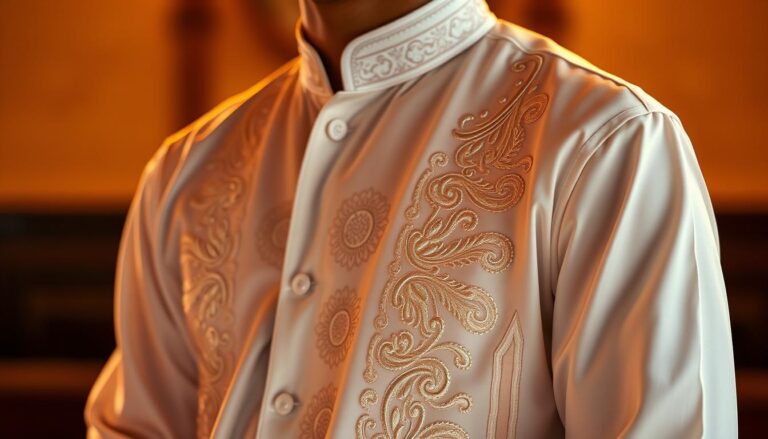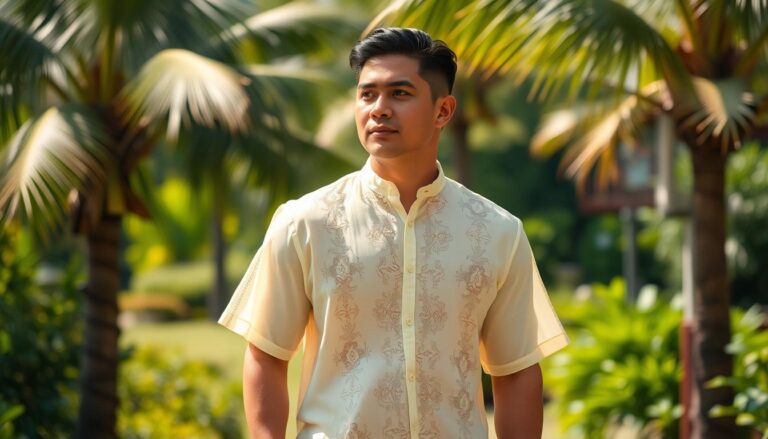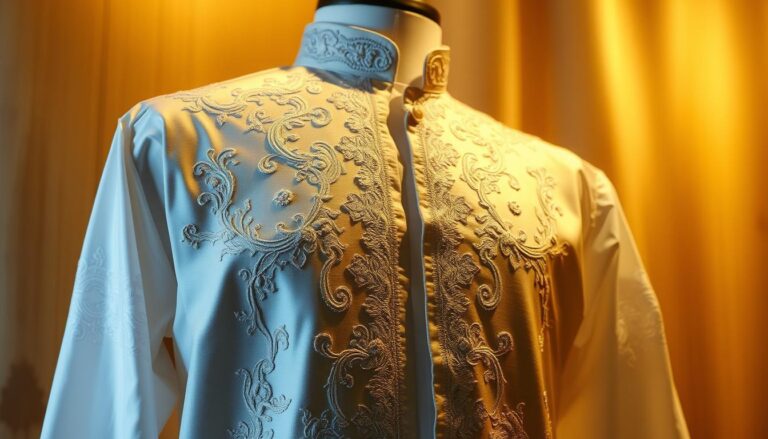The Cultural Significance of Traditional Filipino Clothing
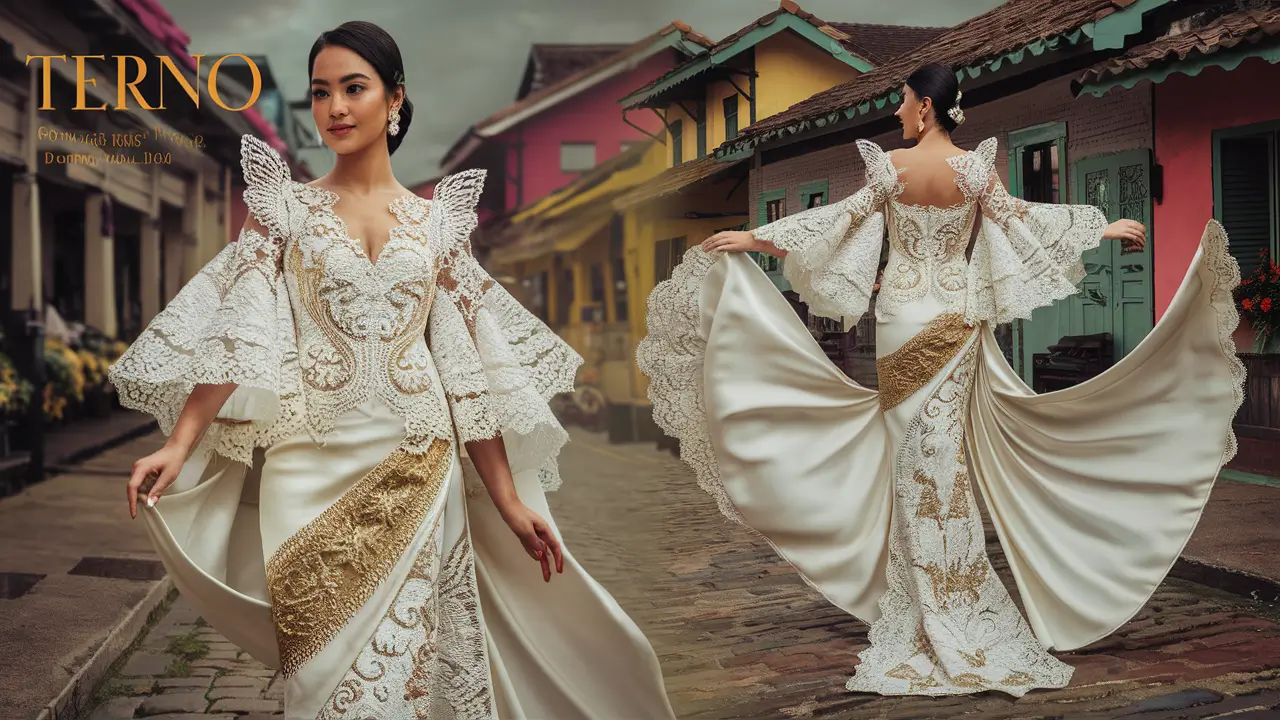
When you explore traditional Filipino clothing, you’ll uncover a rich blend of indigenous, Spanish, Chinese, and American influences. Each garment, from the elegant Barong Tagalog to the iconic Terno, speaks volumes about the wearer’s identity, status, and regional heritage. These clothes aren’t just fabric; they’re a narrative of the Philippines’ history, resilience, and artistic ingenuity.
Designs like the Maria Clara dress and intricate weaves of the indigenous tribes highlight cultural pride and adaptability. By understanding these garments, you’ll grasp the enduring impact of Filipino culture and its evolution through time.
Continue, and you’ll discover more about this fascinating heritage.
Key Takeaways
- Traditional Filipino clothing symbolizes cultural identity and heritage, reflecting the diverse history and influences of the Philippines.
- Garments like the Barong Tagalog and Maria Clara dress embody elegance, modesty, and the fusion of Filipino and Spanish cultures.
- Regional clothing styles highlight the unique cultural practices and craftsmanship of indigenous communities across the Philippines.
- Modern fashion integrates traditional elements, showcasing the resilience and creativity of Filipino designers and artisans.
- Renowned designers promote Filipino culture globally, blending traditional textiles and designs with contemporary fashion trends.
Evolution of Filipino Fashion
The evolution of Filipino fashion reflects a diverse mix of influences. From the intricate beadwork and colourful weaves of Indigenous tribes in the pre-Spanish period to the contemporary blend of Indigenous, Chinese, Spanish, and American styles. You can trace the journey of Filipino fashion back to the indigenous Filipino tribes, whose vibrant textiles and detailed beadwork showcased their cultural identity.
The arrival of Spanish colonizers introduced the Baro and Barot Saya, marking a significant shift towards more Hispanicized clothing styles. These pieces merged traditional elements with Spanish aesthetics, profoundly influencing regional fashion.
As the American period took hold, Western attire such as jeans, T-shirts, and hooded jackets made their way into Filipino wardrobes. This era saw a blend of comfort and practicality, layered over the intricate designs of earlier periods.
Modern Filipino fashion, however, is a rich amalgamation that interweaves these historical influences. The traditional barong, for example, remains a symbol of elegance and cultural pride, while contemporary designs often incorporate indigenous, Spanish, and American elements.
Regional fashion influences also play an important role in this evolution. Different areas of the Philippines showcase unique styles, reflecting the diverse cultural landscape of the nation. This intricate fusion of history and regional identity makes Filipino fashion uniquely vibrant and deeply meaningful.
Iconic Traditional Garments
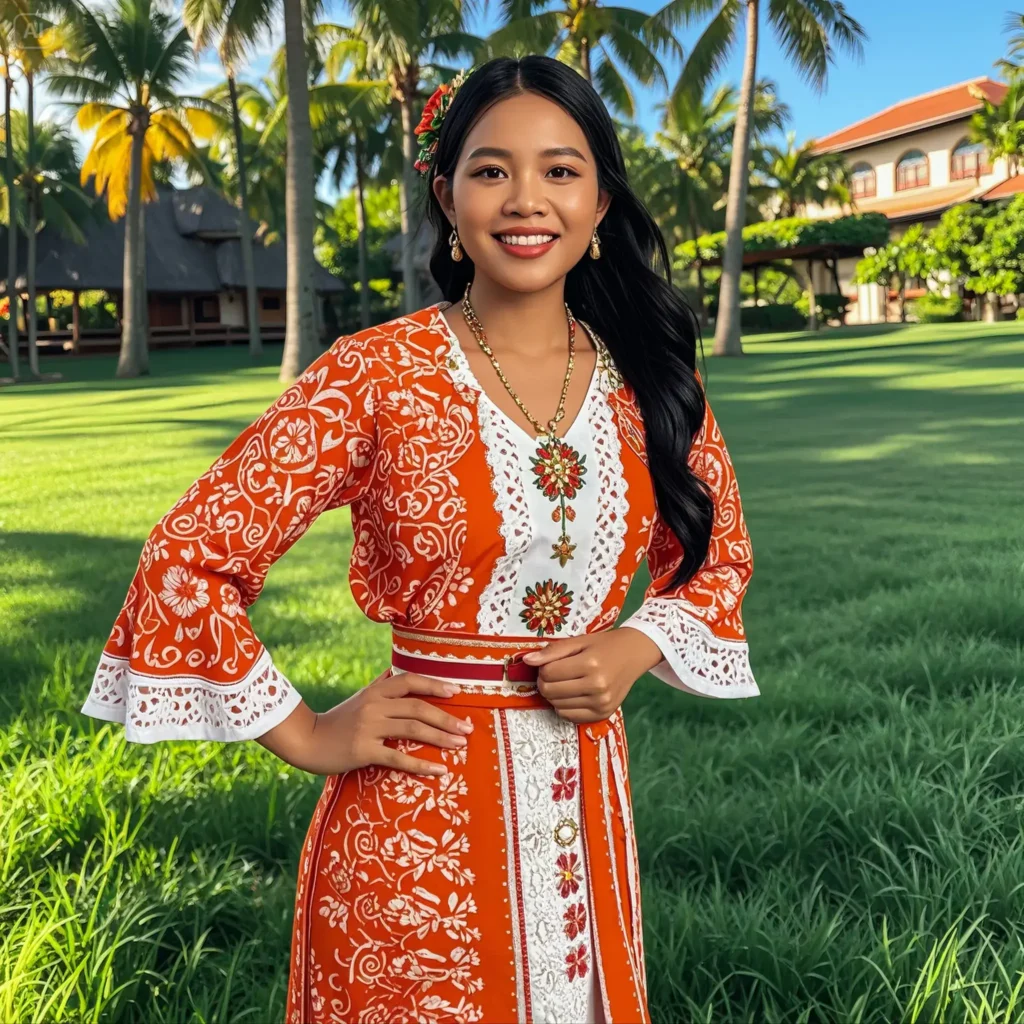
Exploring the evolution of Filipino fashion naturally brings us to the iconic traditional garments that epitomize the nation’s rich cultural history and identity. The barong tagalog, the national dress for men, stands out with its sheer fabric and intricate embroidery, symbolizing modesty and elegance. This piece, deeply rooted in Filipino culture, merges indigenous and Spanish influences, reflecting over 300 years of colonization.
For women, the Maria Clara dress, named after a character in José Rizal’s novel ‘Noli Me Tángere,’ consists of a camisa (blouse), saya (skirt), pañuelo (scarf), and tapis (overskirt). This ensemble is a quintessential example of traditional clothing that showcases the blend of Filipino and Spanish heritage.
The terno, celebrated for its iconic butterfly sleeves, is another staple in Filipino culture. Popularized by Imelda Marcos, it symbolizes elegance and national pride. The salakot, a traditional wide-brimmed hat, also holds historical significance. Crafted with care, it represents the practical and artistic aspects of Filipino life.
These garments aren’t just clothes; they’re cultural artifacts embodying the resilience and creativity of the Filipino people. Each piece tells a story of indigenous craftsmanship, Spanish influences, and a rich cultural mosaic.
Regional Clothing Styles
Exploring regional clothing styles reveals a mosaic of cultural diversity, with each area of the Philippines showcasing distinct traditional attire that reflects its unique heritage and environment. The Igorot people of the Cordilleras wear the Bahag for men, a loincloth that signifies strength and resilience, and the Tapis for women, a wraparound skirt made from regional textiles. These ethnic garments highlight the community’s weaving craftsmanship and connection to their mountainous terrain.
In the Visayas, local clothing traditions like the Kimona and Patadyong ensemble are prevalent. The Kimona, a delicate blouse often paired with the Patadyong, a colourful wrap skirt, showcases the region’s affinity for light, breathable fabrics suitable for its tropical climate.
Mindanao, home to diverse indigenous fashion, features the Kegal Tboli worn by the Tboli tribe, known for its intricate beadwork and traditional accessories. Meanwhile, the Moro people’s attire includes the Malong, a versatile tubular skirt, and the Patadyong, reflecting Islamic influences and vibrant cultural diversity.
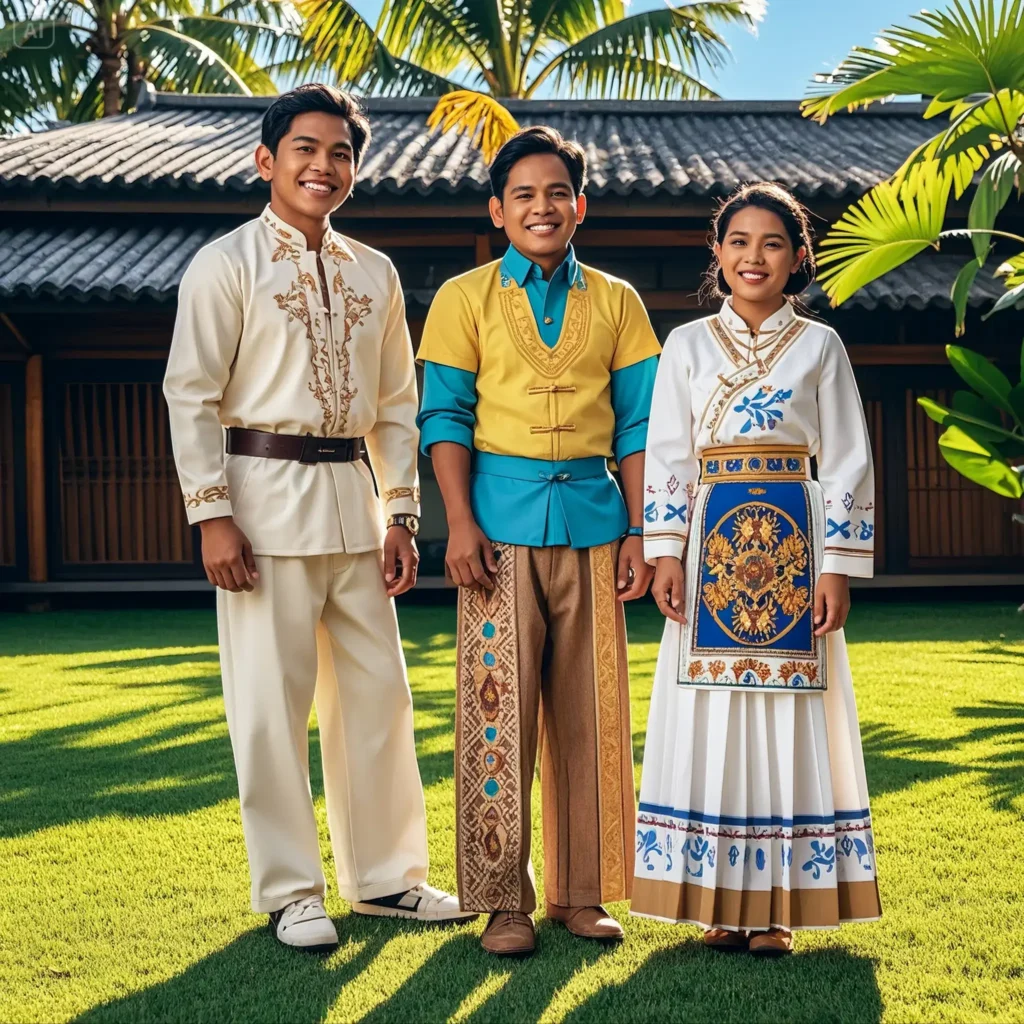
These regional clothing styles and traditional accessories aren’t mere garments but symbols of identity, illustrating the rich fabric of the Philippines’ cultural heritage through their unique designs and functions.
Influences on Modern Fashion
Recognizing the rich mosaic of regional clothing styles across the Philippines, one can see how these diverse influences have seamlessly interwoven with contemporary fashion trends to shape modern Filipino attire.
Traditional Filipino clothing, like the Barong Tagalog and the Terno, isn’t just relics of the past; they persist as key elements in modern fashion, reflecting a blend of history and innovation.
You can observe the impact of Spanish culture in the intricate embroidery and elegance of the Maria Clara dress, which has been adapted into contemporary evening wear. Indigenous communities also contribute meaningfully, with their vibrant textiles and unique weaving techniques finding a place in today’s fashion scene.
These traditional elements are often combined with modern silhouettes and materials, creating a fusion that appeals to both local and international markets.
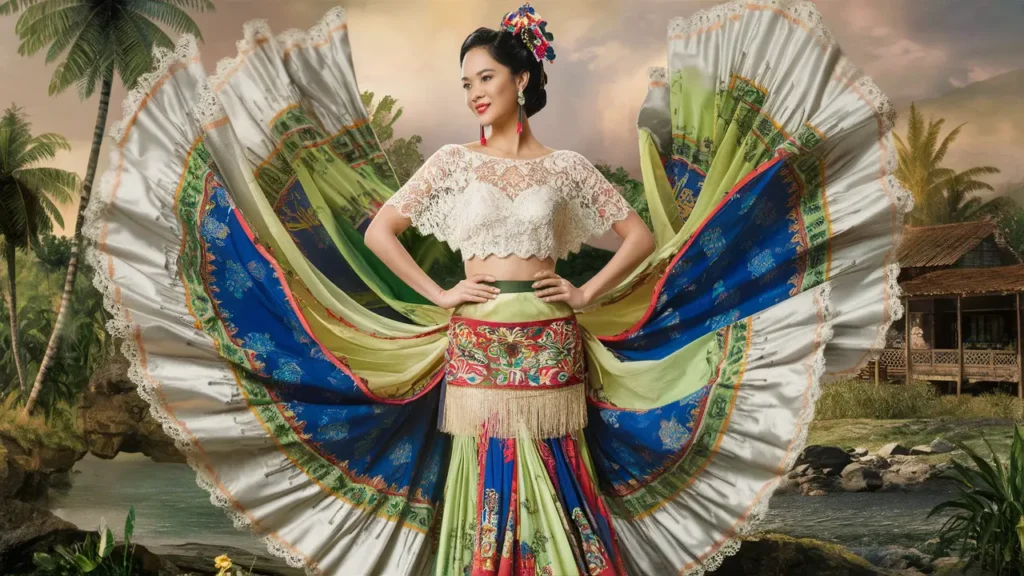
Modern Filipino designers are adept at incorporating these influences, ensuring that traditional clothing remains relevant. By melding the old with the new, they celebrate the rich cultural heritage of the Philippines while pushing the boundaries of modern fashion.
Therefore, traditional Filipino clothing continues to inspire and shape contemporary trends, making it a living, evolving reflection of the nation’s diverse cultural fabric.
Renowned Filipino Designers
The fashion landscape of the Philippines has been greatly influenced by renowned designers like Pitoy Moreno, Rajo Laurel, and Monique Lhuillier, whose innovative approaches have seamlessly blended traditional elements with contemporary styles. These Filipino designers have not only enriched the local fashion scene but have also garnered global recognition for their contributions.
Pitoy Moreno was a pioneer, the first Filipino designer to showcase traditional Filipino clothing on the international stage. His work is celebrated for its intricate embroidery and elegant use of native fabrics, which have become a hallmark of Filipino fashion.
Rajo Laurel is known for his modern and innovative designs that keep the essence of traditional Filipino clothing alive. By incorporating contemporary trends, he has created a unique fusion that appeals to both local and international audiences.
Monique Lhuillier, a Filipino-American designer, has achieved global recognition for her sophisticated and elegant designs. Her works often feature elements inspired by Filipino culture, promoting Filipino culture on a global platform.
| Designer | Contribution |
|---|---|
| Pitoy Moreno | An International showcase of Filipino fashion |
| Rajo Laurel | Fusion of traditional and contemporary trends |
| Monique Lhuillier | Global recognition and cultural promotion |
These designers have played an essential role in promoting Filipino culture through fashion, ensuring that traditional elements remain relevant in the modern world.
Interesting Facts About Traditional Filipino Clothing
- 👗 The terno, a traditional Filipino dress, originally had separate pieces for the skirt and top before evolving into a one-piece garment.
- 🎨 Some indigenous Filipino textiles use natural dyes derived from plants, insects, and even mud.
- 🧵 Piña fabric is made from pineapple leaves – This delicate, luxurious material used in traditional garments is handwoven from pineapple fiber, a unique Filipino innovation.
- 👒 The salakot, a traditional wide-brimmed hat, was not just for sun protection but also served as a rank indicator in pre-colonial times.
- 🦋 The Itneg people of Abra create textiles with intricate butterfly patterns, believed to guide the souls of the deceased to the afterlife.
- 🌺 The Maria Clara dress, named after a character in José Rizal’s novel “Noli Me Tángere,” incorporates elements of both Spanish and Filipino fashion.
- 🧺 T’nalak fabric, woven by the T’boli people, is said to be inspired by dreams and can only be woven by women who have mastered the craft.
- 👔 The Barong Tagalog was originally a symbol of oppression. Under Spanish rule, Filipino men were forced to wear sheer, untucked shirts to distinguish them from the ruling class.
- 💍 Some traditional Filipino garments incorporate tiny bells or coins as decoration, which also serve as amulets for protection.
- 🌈 The Yakan people of Basilan are known for their vibrant textiles that use up to 28 different colours in a single piece.
- 🌿 Traditional dyes came from nature. Before synthetic dyes, Filipinos used plants like indigo (blue), turmeric (yellow), and mangrove bark (red) to color fabrics.
- 👘 The Terno’s butterfly sleeves evolved from practicality. The wide, stiff sleeves were designed to allow airflow in the tropical heat while maintaining elegance.
- 👑 Gold jewelry was woven into clothing. Pre-colonial Filipinos, especially nobility, adorned their garments with gold threads and beads as a status symbol.
- 👗 The Baro’t Saya was inspired by pre-colonial attire. Before Spanish influence, Filipino women wore a two-piece outfit similar to the Baro’t Saya, made from woven abaca or piña fabric.
Frequently Asked Questions
What Is the Traditional Clothing Culture in the Philippines?
You’ll find that traditional Filipino clothing is a rich mosaic of indigenous, Spanish, and American influences. Women traditionally wear the Maria Clara dress, which includes the camisa and saya. Men don the Barong Tagalog, known for its intricate embroidery.
Over the years, these styles have evolved, blending regional variations and modern elements, reflecting the Philippines’ diverse cultural heritage and history.
Why Is Traditional Clothing Important to Culture?
Traditional clothing is essential to culture because it embodies a nation’s history, values, and identity. When you wear traditional attire, you connect with your ancestors and honor the craftsmanship passed down through generations.
These garments aren’t just clothes; they’re symbols of cultural pride and unity. By donning traditional clothing, you help preserve and promote your heritage, fostering a sense of belonging and continuity in your community.
Why Is Fashion and Style Important in the Philippines?
Fashion and style in the Philippines are vital for expressing cultural identity and heritage. You see a blend of indigenous, Spanish, American, and modern influences showcasing the country’s rich history.
Fashion serves as self-expression and connects you with Filipino traditions and values. It promotes pride, creativity, and individuality on a global scale, making it an essential aspect of Filipino life and a reflection of the nation’s diverse cultural landscape.
What Is the Significance of Traditional Dress?
Traditional dress holds immense significance as it connects you to your cultural roots and heritage. It symbolizes social status, values, and traditions.
When you wear traditional clothing, you’re honoring and preserving customs, while showcasing intricate craftsmanship and historical influences.
What is the national dress of the Philippines?
The Barong Tagalog for men and the Baro’t Saya for women are considered the national dress of the Philippines
What materials are traditional Filipino clothes made from?
Traditional Filipino clothing often uses lightweight fabrics like piña (pineapple fiber), abaca, or jusi (banana silk) due to the tropical climate.
What is a terno?
The terno is a formal dress for women featuring distinctive butterfly sleeves, typically worn for special occasions and formal events.
Are there regional differences in traditional Filipino clothing?
Yes, different regions have unique traditional garments, such as the Malong in Mindanao or the Kimona in the Visayas.
Conclusion
By learning about traditional Filipino clothing, you’ve discovered the country’s rich history and culture. Garments like the Barong Tagalog and Maria Clara dress tell stories from the past and show how different influences shaped the Filipino identity.
Appreciating these clothes helps you understand the blend of old and new in the Philippines.
How will you explore more about Filipino traditions? Share your thoughts and experiences in the comments, and keep exploring our blog for more exciting topics!
